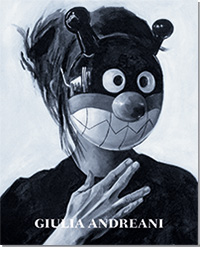Künstlerbücher / Special Editions
Almond, Darren / Blechen, Carl: Landschaften
Brown, Glenn: And Thus We Existed
Butzer, André: Exhibitions Galerie Max Hetzler 2003–2022
Chinese Painting from No Name to Abstraction: Collection Ralf Laier
Choi, Cody: Mr. Hard Mix Master. Noblesse Hybridige
Demester, Jérémy: Fire Walk With Me
Dienst, Rolf-Gunter: Frühe Bilder und Gouachen
Dupuy-Spencer, Celeste: Fire But the Clouds Never Hung So Low Before
Ecker, Bogomir: Man ist nie Alone
Elmgreen and Dragset: After Dark
Förg, Günther: Forty Drawings 1993
Förg, Günther: Werke in der Sammlung Friedrichs
Galerie Max Hetzler: Remember Everything
Galerie Max Hetzler: 1994–2003
Gréaud, Loris: Ladi Rogeurs Sir Loudrage Glorius Read
Grosse, Katharina: Spectrum without Traces
Hatoum, Mona (Kunstmuseum
St. Gallen)
Eric Hattan Works. Werke Œuvres 1979–2015
Hattan, Eric: Niemand ist mehr da
Herrera, Arturo: Boy and Dwarf
Hilliard, John: Accident and Design
Horn, Rebecca / Hayden Chisholm: Music for Rebecca Horn's installations
Huang Rui: Actual Space, Virtual Space
Kowski, Uwe: Gemälde und Aquarelle
Mikhailov, Boris: Temptation of Life
Mosebach, Martin / Rebecca Horn: Das Lamm
Neto, Ernesto: From Sebastian to Olivia
Oehlen, Albert: Spiegelbilder. Mirror Paintings 1982–1990
Oehlen, Albert: unverständliche braune Bilder
Oehlen, Pendleton, Pope.L, Sillman
Oehlen, Albert | Schnabel, Julian
Phillips, Richard: Early Works on Paper
Riley, Bridget: Gemälde und andere Arbeiten 1983–2010
Riley, Bridget: Die Streifenbilder 1961–2012
Riley, Bridget: Paintings 1984–2020
True Stories: A Show Related to an Era – The Eighties
Wang, Jiajia: Elegant, Circular, Timeless
Wool, Christopher: Westtexaspsychosculpture
Zhang Wei / Wang Luyan: Ein Gespräch mit Jia Wei
 |
|
|||
| Giulia Andreani Texte Flavia Frigeri, Erik Verhagen Englisch / Französisch
|
Die umfangreiche Monografie zeigt die ganze Bandbreite des Werks von Giulia Andreani von 2011 bis heute in mehr als 150 Gemälden, Aquarellen und Skulpturen. Für die Malerin ist die künstlerische Recherche zu Darstellungen von Frau, Macht und Gesellschaft wesentlich. So beginnt ihre Praxis im Archiv oder im Internet auf der Suche nach geschichtlichen Abbildern von Frauen und Männern, die durch ihre Rolle oder ihr Handeln soziale Aspekte verkörpern: Widerstandskämpferinnen, Wissenschaftlerinnen, Diktatoren und ihre Ehefrauen, patriarchale Künstler, spielende Kinder werden aus den Quellen entweder malerisch in Porträts übersetzt, oder zu komplex collagierten Szenarien in imaginären Historiengemälden ausgearbeitet. Alle Bilder sind in unterschiedlichen Nuancen von Paynes Grau gehalten, so dass die Figuren in einem Dialog über die Jahrhunderte auf derselben Bühne stehen. Gefundene Fotografien, digitale Bearbeitung und malerische Erfindung sind gleichberechtigte Mittel, um zu einem Bild des weiblichen Blicks zu gelangen, das gleichzeitig immer auch hinterfragt wird. „Andreanis Auffassung von Kunstgeschichte ist durchlässig und alles andere als rein“, schreibt Flavia Frigeri in ihrem Essay, „aber sie bewirkt, dass die Frau im wahrsten Sinne des Wortes in den Mittelpunkt des Bildes gerückt wird.“
Grauzone. Giulia Andreani for the Illiterate There is some part of mystery in the artist’s imagined path. From the discovery of her photographic sources to their appropriation and transformation, numerous mechanisms come into play that confer onto her transport de l’image a processual perspective, showing us that painting—pictorial becoming—is also temporal. The role intuition plays in her choice of photos is not insignificant. Once the source, anonymous or known, is selected, Giulia Andreani begins a process of deconstructing, erasing, filtering, enabling her to retain essential elements that, after being metamorphosed and reconverted into pictorial signs, are enhanced and combined with other ‘figures’ borrowed from complementary sources or invented expressly for this purpose. A way for her to propose new scenarios starting with a puzzle whose pieces have been rearranged. Questions of scale are clearly important here, and it is only once the works have been hung that their pictorial quality comes to the fore. A quality that evolves in keeping with the presentations and materials. Her works on paper, compact and small in format, with their unstable aqueous matter, are thus based on a different mode of functioning from that of her acrylics on canvas or paintings made in situ, conducive to creating compositions with broader iconological potentialities, exacerbating the reading grids and/or, on the contrary, neutralizing them. Because when W.J.T. Mitchell writes that images can want “nothing at all,” he grants them the right to take refuge in silence, that other figure of the neutral that, according to Barthes, refers to “a sort of timeless virginity of things, before they are born or after they have disappeared.” Depending on the situation and on our desire to engage in dialogue with them, Giulia Andreani’s paintings can be either expressive or silent. They are consequently “marked with all the stigmata of personhood: they exhibit both physical and virtual bodies; they speak to us, sometimes literally, sometimes figuratively. They present, not just a surface, but a face that faces the beholder.” They situate themselves on the threshold, and only this location can do them justice …
... |